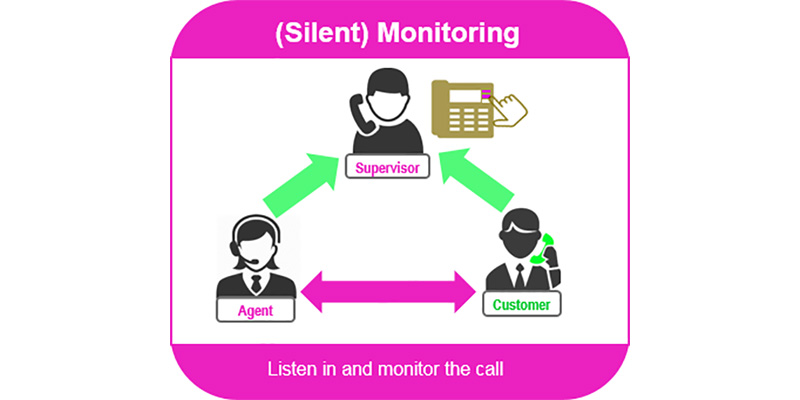What is Call Monitoring? How Do Call Monitoring Systems Work?
Every time you call a customer care number, an automated voice will inform you that your call will be recorded for education purposes. Simply put, this is called ‘call listening,’ and using it for education purposes is called ‘call monitoring.’
It is used to evaluate the performance of agents or call representatives that interact with customers, and allows you to make changes to improve sales and marketing efforts. Do they answer appropriately when it comes to standard queries? What do they do if they are presented with a question they do not know the answer to? Having the right answers can help, not just to increase customer or client satisfaction, but to ensure you get more repeat business as well.
In this article, we will go into detail about call monitoring and cover a number of topics, including who uses call monitoring systems, how it works, and what its benefits are.
Commonly used by the customer care department, call monitoring is the act of listening to a live call or a recorded phone call between a customer and a customer care executive. The marketing team reviews these phone calls and takes notes to improve the calls and increase lead conversion. It also helps in changing strategies and developing marketing campaigns.

How do you boost your company’s phone call monitoring?
Most companies don’t engage in call monitoring because it is expensive and managers don’t know exactly how to make use of it. But don’t worry, here are three ways you can make call monitoring efficient:
1. Define measures to evaluate quality customer interaction
If you don’t set standards to evaluate your calls, you won’t know if your company’s methods are really effective.. The first thing you do is set a standard that you can use to know what improvements your customer care department needs. There are multiple ways you can bridge the gap, including customer care training, workplace scheduling, and coaching initiatives.
2. Shift the focus on outliers
It isn’t possible to monitor each and every call. It is a time-consuming process, so the best you can do is evaluate outliers. Outliers are your company’s best and worst performers. You compare their calls and the customers they bring in to create an average report. It not only saves time but also helps the low performers meet demands by making necessary changes.
3. Put emphasis on high yield behaviors
A quality call is one that effortlessly turns a caller into a customer by using high yield behavior. There are a number of high yield behaviors your customer care executives can follow, including solving new-hire attrition, script compliance/adherence, and high NPS techniques.
Call monitoring services are used across multiple departments in an organization. Here are some departments that use phone call monitoring:
1. Sales departments
There are a number of ways sales departments use call monitoring to improve sales workflows, give feedback to trainees, and teach new executives to handle complicated cases. It is also used to give information about new promotions and services offered by the organization.
2. Call centers
Call centers receive and make a large volume of calls every day. They use call monitoring to ensure that all customers receive proper information. Also, most companies outsource customer care services, so they can use call monitoring to ensure their standards are met.

3. Marketing departments
Marketing departments use recorded or live call monitoring to check the quality of customers they get. They also use it to check if the sales team correctly received the message from the marketing team.
Call listening is a complicated and time-consuming process, which is why you need to carry out the process in a systematic manner. Here’s how call listening software works:
1. Set a standard protocol
The first thing you need is a standard protocol in which you can judge or evaluate the calls that you record. Break down the evaluation into different categories including professionalism, resolution, accuracy, and greeting, so it is easy for you to build a protocol.
2. Hire a quality monitoring head
Hire someone who has a good amount of experience in quality monitoring. Their job would be to train other quality monitoring specialists according to your business standards.

3. Invest in a call monitoring system
If you want your company to be known for its high customer satisfaction, you need a system that streamlines the call monitoring process. By investing in an automated quality monitoring system, you record customer data faster and spot behavioral trends to offer the correct service.
1. Helps in goal setting
Goal setting is difficult because most of the time companies set unrealistic goals. After hearing feedback from customers, you can set a practical goal and develop an action plan for it. It can help low-performance customer care executives to find their mistakes and overcome them.
2. Highlights the deficits in your call procedure
Call monitoring can help you understand the deficits and proficiencies of your customer care team. Your manager can use the calls to quantitatively measure their call score and help them bridge the gap.
3. Improves customer satisfaction
By monitoring calls, you can give feedback to your executives or agents and help them boost customer satisfaction. Only when customers are satisfied will they come back to purchase more products or services.
